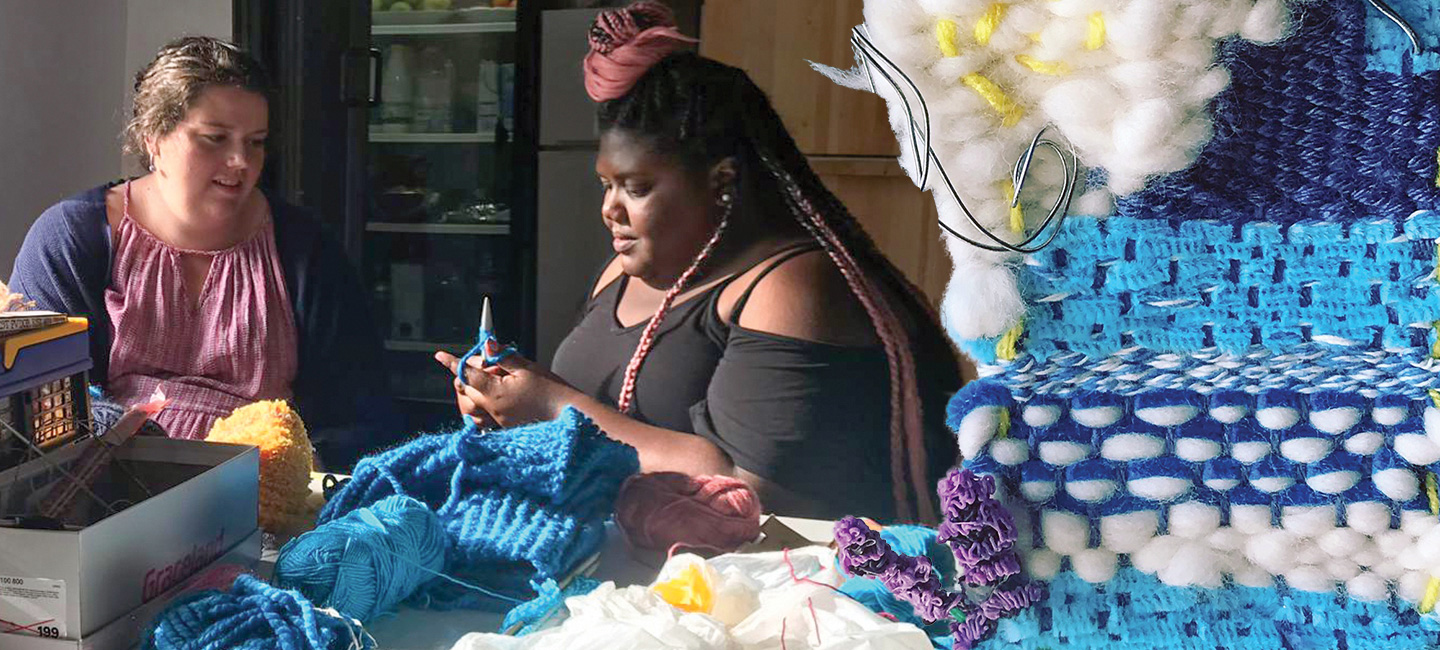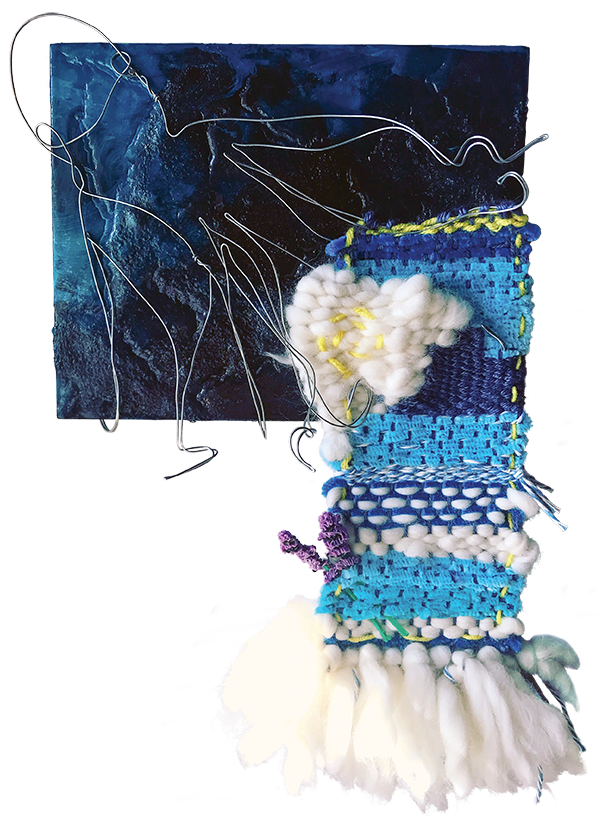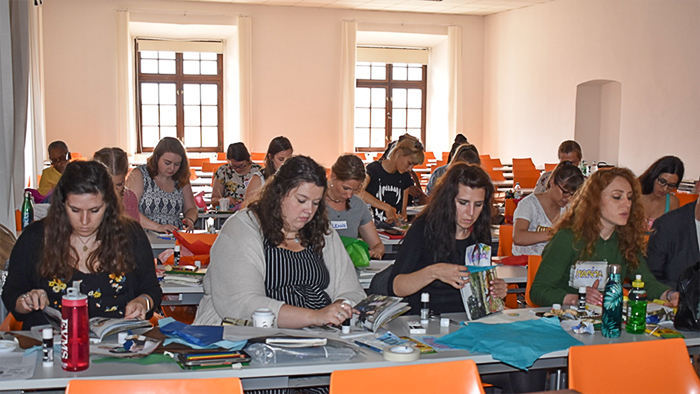
Croatia visit brings students face-to-face with trauma of civil war
A dozen EVMS Art Therapy & Counseling students and their faculty traveled halfway around the world last summer to learn about the trauma that a civil war brings to combatants and citizens alike. It has been a century and half since America experienced the pain and anguish of a war on its own soil. Not so in Croatia, where the memories of a war for independence from 1991 to 1995 are still fresh.
Eight senior Art Therapy & Counseling students delayed their
graduation date to join four first-year students for a unique 17-day
learning experience says Mary Roberts, PhD, Director of the Art
Therapy & Counseling program, who led the trip.

The opportunity to visit Croatia grew out of a chance encounter. At a meeting of the American Art Therapy Association last fall, Dr. Roberts met Jasmina Pacek, MFA, Vice Dean at Jospi Juraj Strossmayer University in Osijek, Croatia. Dr. Roberts shared her Arts for Optimal Health Program – Virginia Veterans Project with Dr. Pacek.
At Dr. Pacek’s invitation, Dr. Roberts visited Croatia to teach students in the newly formed Creative Art Therapy program at Strossmayer University. The teaching experience and Dr. Roberts’ exposure to the country’s war-torn history sparked the idea for the return visit — this time accompanied by her own students, including two other faculty members and the program coordinator.
Dr. Roberts spoke with American and Croatian students about the concept of “trauma informed art therapy” and how to treat various forms of trauma, including combat trauma and trauma to spouses, children and families.
The students witnessed the effects of the homeland war on the physical environment, buildings and spaces, and the people, as they learned about historical trauma, the generational effects and initiatives to heal the country.

“They explored rural, urban and coastal parts of the country,” Dr. Roberts says, “with the intent to learn about the culture, develop relative understandings of mental health services in Croatia, and gain advanced skills in working with trauma.”
Among other activities, the visiting EVMS students facilitated art-making workshops in an art museum, toured a commune for treating individuals with addictions and facilitated an expressive art-making workshop for survivors of human trafficking. The students also toured memorial war sites in Vukovar, Croatia, near the Serbian border to gain a better understanding of the historical trauma of the war of independence. And they met defenders and heard first-hand stories of the war and challenges from the dissolve of Yugoslavia.
“Students who immerse themselves in different cultures develop more relative thinking,” Dr. Roberts says. “Students benefit from understanding global and national differences and similarities in approaches to healthcare, especially mental healthcare.”
Lisa Thomas was among the students who took advantage of the trip. An American with a Croatian heritage, Ms. Thomas was excited to visit her family’s homeland and to witness the growth of art therapy there.
“Croatia has previously embraced other expressive psychotherapies,” she says, “such as dance movement therapy, music therapy and drama therapy, and now there are efforts being made to incorporate art therapy into common practice.”
One thing that struck her most from the trip was Croatia’s approach to mental health treatment.

“When I interacted with members from the community, such as adult psychiatric inpatients and substance-use disorder patients, I could not distinguish the clinicians from the patients,” she says. “The clinicians, whether it be nurses or psychologists or residential therapists, did not wear name tags or badges or different clothes to indicate their name, profession, or their position of power. Instead, they essentially blended in with the patients, making themselves appear as equals, as members of the same community, and this was reflected in the way the patients were treated, as well.”
Ms. Thomas also took note of differences in the treatment of substance use disorders.
“We visited a self-sustaining commune that housed around 30 individuals,” she recalls. “These individuals cooked, cleaned, took care of the animals, and built figurines that they could sell in the community to provide themselves a small income, on top of intensive therapy during the week. Their work gave them purpose, and the commune provided a safe space for them to rehabilitate from their addiction. It was truly an eye-opening and inspiring experience.”